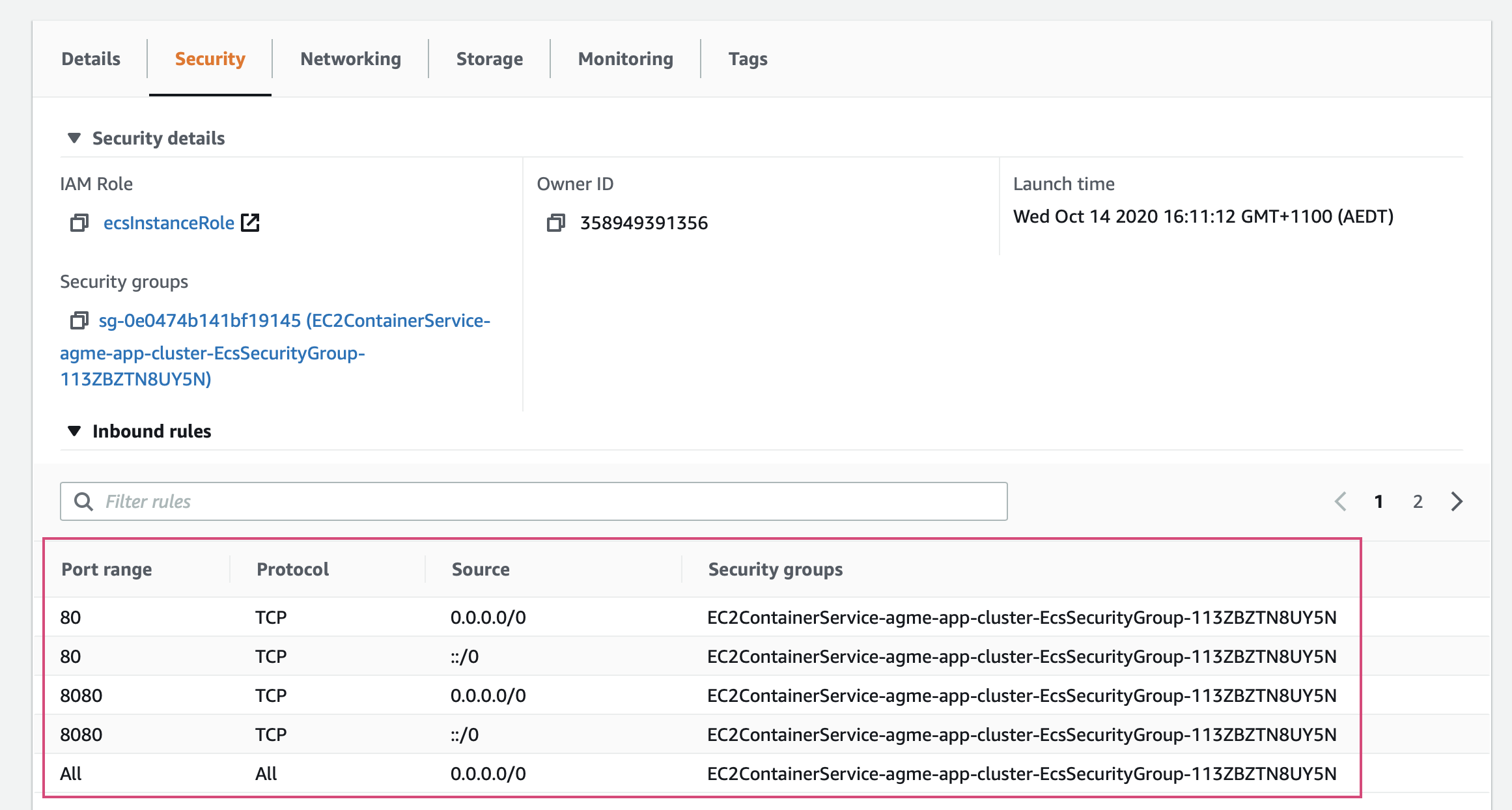- U'REN, Donald (s3686963)
- LEE, Ge (s3776409)
- KHOSRAVI, Ali (s3788120)
- Code repository: Github
- Task management: ClickUp
- Communications channel: Microsoft Teams
Quick Start in docs folder
Wiki via Wiki tab
npm run test if testing the frontend project
or
docker build -f Dockerfile -t agme-app:prod . to test the dockerised frontend project
In order to enable CICD, the project will need to be setup with CircleCI:
- initialise project with CircleCI
In order to deploy the frontend AWS resources will need to be configured (Guide):
- creata a new ECR for the frontend project
- create a task definition
- create a new ECS Cluster for deployment of frontend containers
- create a new ECS Service to update EC2 instances
For the frontend EC2 instance, ensure that the inbound security group rules allow for access from all addresses as follows:

After these have been created, environment variables will needed to be added to the CircleCI project
Once a developer commits or merges into master, the new container will be pushed to AWS and deployed to the EC2 instance.


To run the dockerised frontend web app locally, you can run docker run -it --rm -p 1337:8080 agme-app:prod
In order to access the deployed instance, simply navigate to the EC2 Instance panel and access the frontend via the IPv4 link

mvn package if testing the backend project
or
docker build . to test the dockerised backend project
In order to enable CICD, the project will need to be setup with CircleCI:
- initialise project with CircleCI
In order to deploy the backend AWS resources will need to be configured:
- create a new RDS instance for the project
- create a new ECR for the backend project, as per course guides
- create a new ECS Cluster for deployment of backend containers: Guide
- create a new ECS service to update EC2 instances: LINK TO TUTORIAL
For the RDS Instance, ensure that the inbound security group rules allow for access from all addresses as follows:

For the backend EC2 instance, ensure that the inbound security group rules allow for access from all addresses as follows:

After these have been created, environment variables will needed to be added to the CircleCI project
- AWS Access Key ID
- AWS Account ID
- AWS Default Region
- AWS Resource Name Prefix: this is the name of the ECR instance
- AWS Secret Access Key
- AWS Session Token

Once a developer commits or merges into master, the new container will be pushed to AWS and deployed to the EC2 instance.


To run the dockerised backend service locally, you can run docker run -p 8080:8080 -t container
In order to access the deployed instance, simply navigate to the EC2 Instance panel and access the backend via the IPv4 link



